☆ PuniPuni Youtube ☆
Japanese Grammar – Using て- Form as “and” – Review Notes
Last grammar lesson, we learned how to make the て- form (te-form) of Japanese verbs! Today we learned how to connect verb phrases like the word “and” using the て- form!
In these video review notes we will go over today’s Japanese grammar in greater detail and see some more examples.
………………………………………………………………………………..
Last Grammar Lesson:
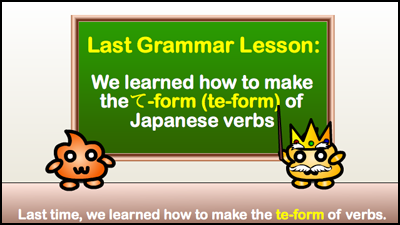
★ Last time we learned how to make the て-form (te-form) of Japanese verbs.
★ て-form (te-form) by itself does not have a tense (past, present, etc.)
★ There are many, many ways to use て-form (te-form).
★ If you missed our last grammar lesson, please see it first! Click Here!
………………………………………………………………………………..
Today’s Lesson: Connect verbs w/ て-form
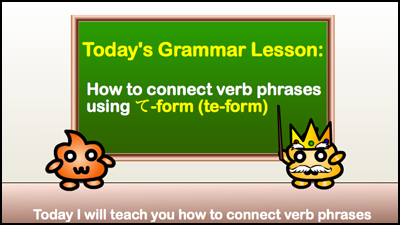
★ Today we will learn how to connect verb phrases using て-form.
………………………………………………………………………………..
Review: The Particle と (to) as “and”

★ As you may recall from a past lesson the particle と (to) can be used to connect two nouns, similar to the English word “and.”
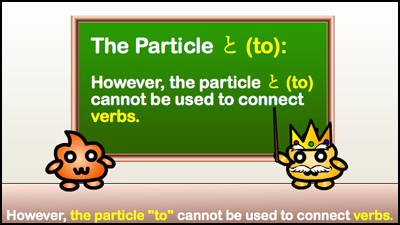
★ However, the particle と (to) cannot be used to connect verbs (for example: eat and drink).
★ To do this, we must use the て-form instead.
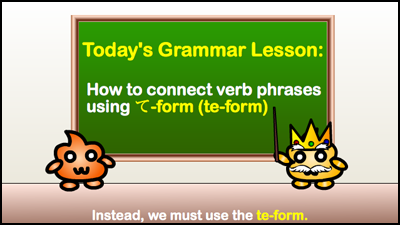
………………………………………………………………………………..
How Use て-form to Connect Verb Phrases:
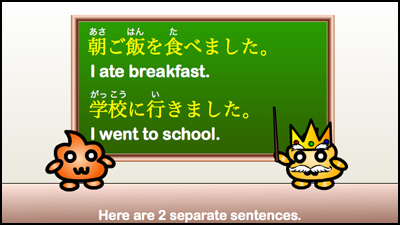
★ First we have two sentences (verb phrases) in past tense.
………………………………………………………………………………..
朝ご飯を食べました。
Asagohan o tabemashita.
I ate breakfast.
………………………………………………………………………………..
学校に行きました。
Gakkō ni ikimashita.
I went to school.
………………………………………………………………………………..
★ In order to connect these with “and” we must change the verb of the first sentence into て-form.
★ If you don’t remember how to change verbs into て-form click here!
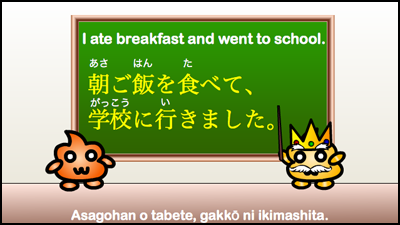
★ As one sentence, it becomes:
………………………………………………………………………………..
朝ご飯を食べて、学校に行きました。
Asagohan o tabete, gakkō ni ikimashita.
I ate breakfast and went to school.
………………………………………………………………………………..
Indicating a Chronological Relationship:
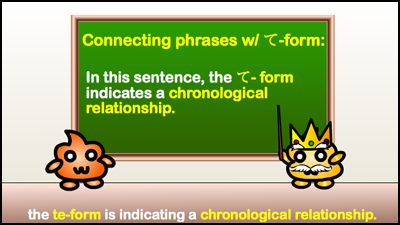
★ In the example above, a chronological relationship between the two sentences has been established.
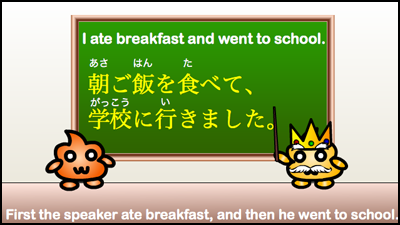
★ It is obvious by reading the sentence that the speaker first ate breakfast and then went to school.
………………………………………………………………………………..
Another Example: The Tense of て-form
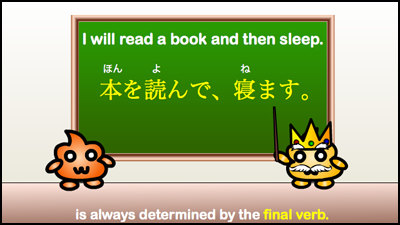
★ In the last example, we used two past-tense sentences to form one past tense sentence.
★ In this example, we are using non-past tense. If you don’t know what non-past tense is, click here.
本を読んで、寝ます.
Hon o yonde, nemasu.
I will read a book and then sleep.
★ The て-form by itself does not have a tense. Rather, the tense of the whole sentence is determined by the final verb in the sentence.
★ In this example, it is obvious that the speaker will do these actions in the (near) future.
………………………………………………………………………………..
て-form Can also Indicate Cause-Effect:
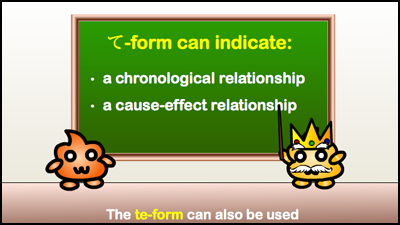
★ て-form can also indicate a cause-effect relationship.
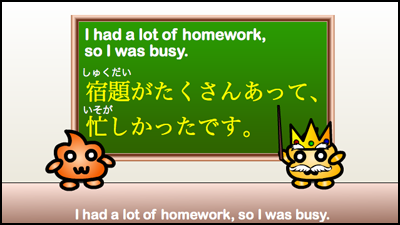
★ For Example:
宿題がたくさんあって、忙しかったです。
Shukudai ga takusan atte, isogashikatta desu.
I had a lot of homework, so I was busy.
★ The first part of the sentence is explaining the cause of the second part of the sentence.
★ In this case, rather than translating as “and,” it is more accurate to translate as “so.”
………………………………………………………………………………..
Additional Information:
★ て-form can be used multiple times in a sentence to connect a series of actions. For example:
朝ご飯を食べて、シャワーを浴びて、学校に行きました。
Asagohan o tabete, shawā o abite, gakkō ni ikimashita.
I ate breakfast, took a shower, and went to school.
………………………………………………………………………………..
Additional Examples:
……………………………………………………………………………….
秋葉原に行って、アニメグッズを買います。
Akihabara ni itte, anime guzzu o kaimasu.
I will go to Akihabara and buy anime goods.
……………………………………………………………………………….
食べ過ぎて、おなかが痛くなりました。
Tabesugite, onaka ga itakunarimashita.
I ate too much, so I got a stomachache.
……………………………………………………………………………….
Conclusion:
That’s it for today’s Japanese grammar lesson! If you have any questions, please leave a comment below!
……………………………………………………………………………….
Want to learn over 600 Japanese verbs and have a quick and easy reference to all of their conjugations?? We recommend the Complete Japanese Verb Guide from Tuttle! ⬇
In addition to being a quick but thorough reference to over 600 verbs and their conjugations, it also includes hundreds of useful example sentences! Get it now!
……………………………………………………………………………….
Do you want a Japanese tutor?
Take Japanese Skype Lessons with Professional Japanese Teachers on kakehashijapan.com!
………………………………………………………………………………..
………………………………………………………………………………..



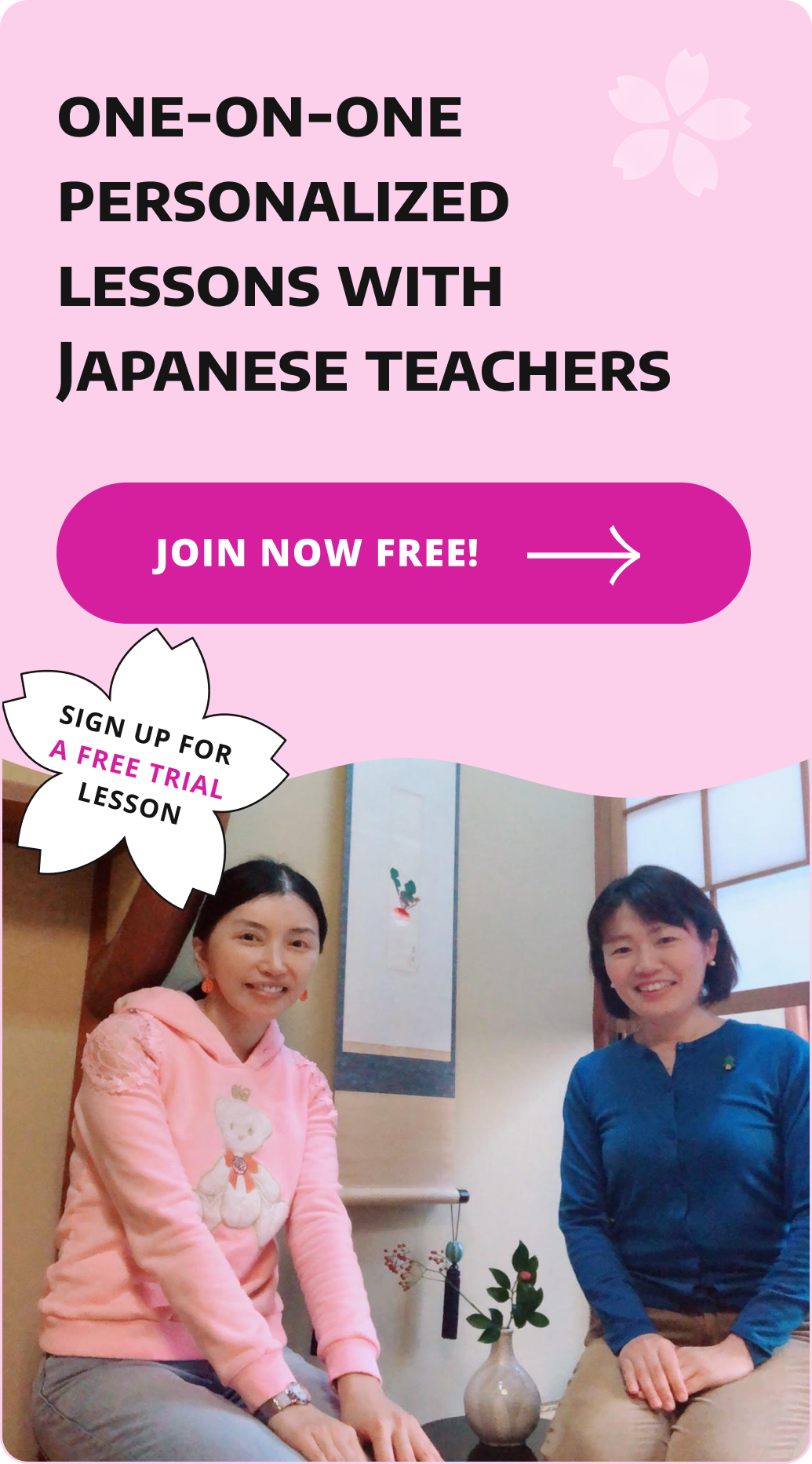






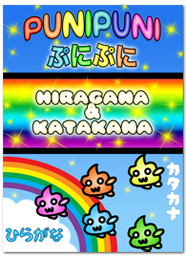
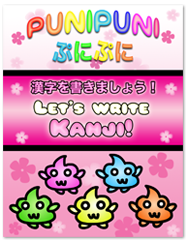


one comment
こんいちわ!
Referring to the sample sentence, “宿題がたくさんあって、忙しかったです。”
You indicated this a ‘A’ so ‘B’ relationship..
What if I want to say,
“I had a lot of homework, and I was busy.”
instead of
“I had a lot of homework, so I was busy.”
ありがとうございます!
Comment by Lexi M on 07/15/2014 at 11:13 amぷにぷにが大好きです :3